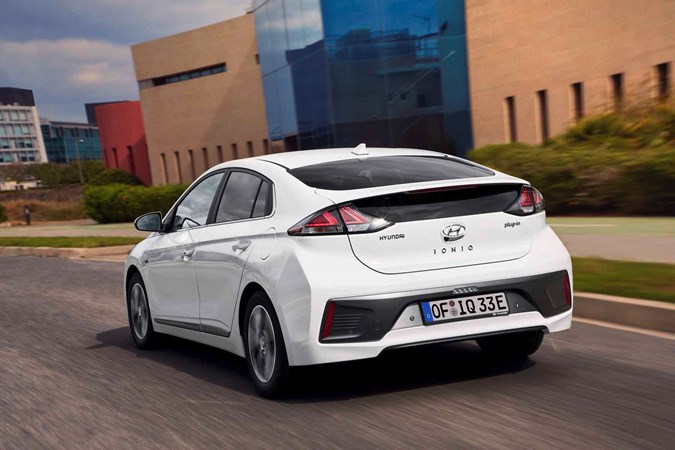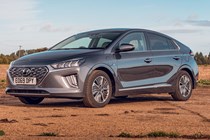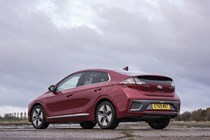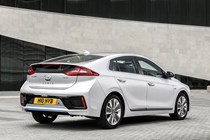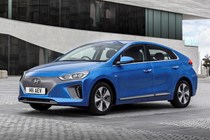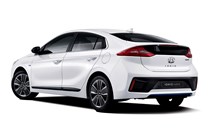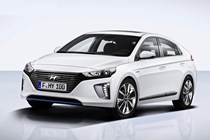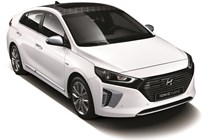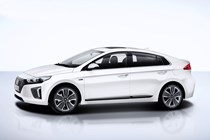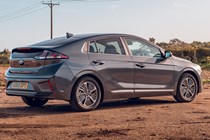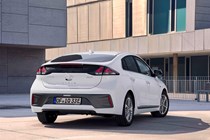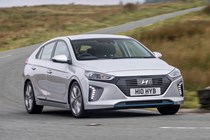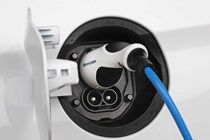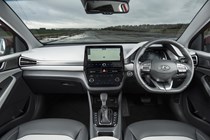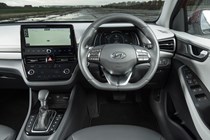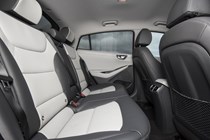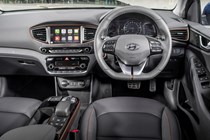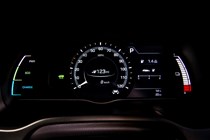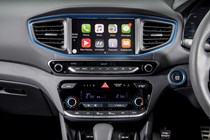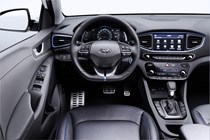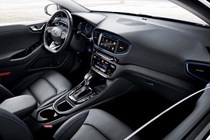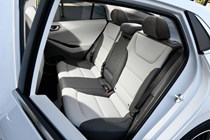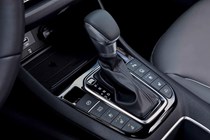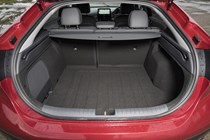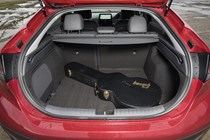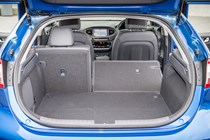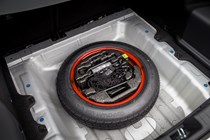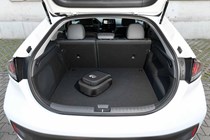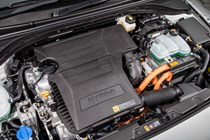
Hyundai Ioniq Hatchback engines, drive and performance

- Performance boost from electric motor
- Hybrid will be more versatile
- Suits a laid-back driving style
Hybrid engines
Available in standard hybrid and plug-in hybrid forms (plus the Ioniq Electric pure-EV that we’ve reviewed separately), the Ioniq’s low-drag design, plus clean airflow around the wheels and side sills means this hatchback needs less power to cut through the air, aiding efficiency and performance – according to Hyundai.
The electric motor and 1.6-litre petrol engine combine to produce 141hp and 265Nm of torque, which is good for a 0-62mph time of 10.8 seconds and is on a par with the Toyota Prius, even though that car is around 20hp down on the Ioniq.
A dual-clutch gearbox is an unusual addition to this powertrain – the Prius, for example, use a Continuously Variable Transmission (CVT), which can often feel and sound strange when accelerating at anything over a moderate pace. As a result the Ioniq Hybrid, while not a particularly quick car, is quiet and smooth in use. The experience can be enhanced by selecting Sport mode, which primes the system for maximum performance and also adds weight to the steering.
The plug-in version features a larger 59kWh battery and a more powerful electric motor, but develops the same total system power and torque as the standard hybrid. It’s also a little bit heavier, and yet manages the 0-62mph sprint two tenths of a second quicker. But the main difference is the fact that this car can travel up to 39 miles on battery power alone.
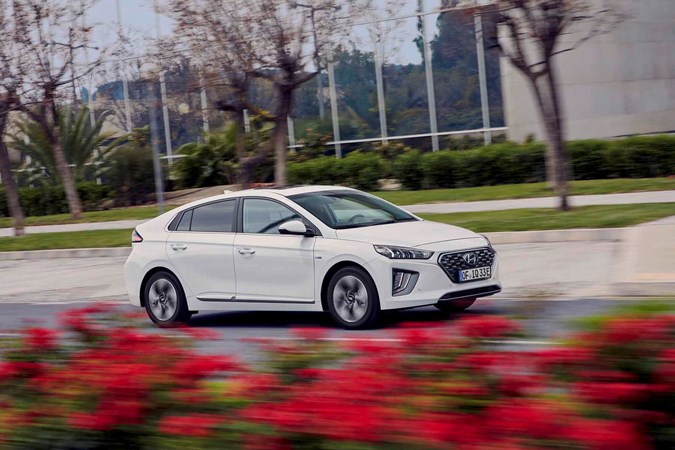
You can also use the electric power in combination with the petrol engine on longer trips in order to reduce fuel consumption. Like the standard Hybrid, the car decides when to swap between the two, or when to use both motors at the same time. In order to achieve this you’ll need to externally charge the Plug-in – we’ve explained how long this will likely take in the Running Costs section.
Both cars feature regenerative braking that can be controlled using paddles behind the wheel. Tug the left lever to ‘downshift’ and you increase the amount of braking force applied by the motor. Adapt to this and you’ll find you need to use the conventional brakes much less, helping you extend the driving range (as energy otherwise wasted is recuperated) while reducing wear and tear on the brake pads and discs.
Ioniq models fitted with the 10.25-inch touchscreen also benefit from Hyundai’s Eco Driving Assistant System (ECO DAS). This uses information from the sat-nav to advise the driver of the best time to decelerate, in order to minimise brake use. Gradient data also helps the car set itself up in the most efficient way possible, planning ahead for long uphill stretches, for example.
What’s it like to drive?
- Not an exciting car to drive
- Accomplished at soaking up bumps
- Unsettled by sudden direction changes
The Ioniq isn’t supposed to be a sports car, but the Toyota Prius has stepped up its game and is much better to drive these days, so the Ioniq still needs to be at least moderately engaging from behind the wheel to compete on equal terms. However, moderately engaging is just about the best way of describing it.
It’s not a bad car to drive by any means, but it’s just not very memorable. If you want to get from A to B with zero fuss or involvement, then the Ioniq will happily oblige. There’s no feedback from the controls – press the accelerator and the car goes, the brakes make it stop and the steering points it in the direction you want to travel without any information coming back through the wheel.
The weight of the hybrid drive system means it rolls quite a bit through the corners (disconcertingly so if you perform a sudden lane change), and overall the Ioniq is unlikely to ever really get under your skin to become something you relish driving.
It does at the least feel very planted and offers safe and secure grip levels that shouldn’t leave you wanting for more traction under normal driving conditions. Take things easy, and the Ioniq will deliver a relaxed driving experience.
